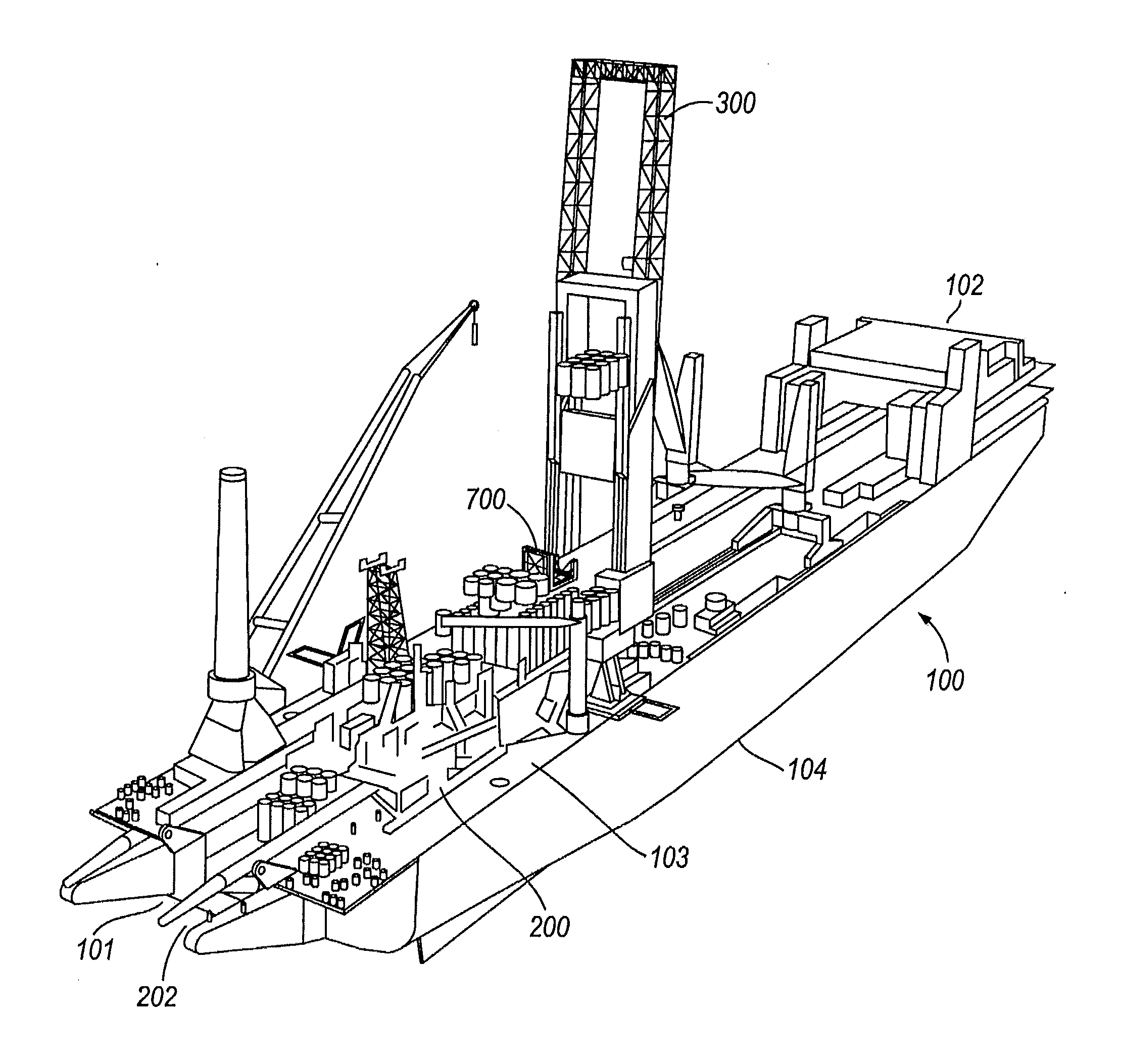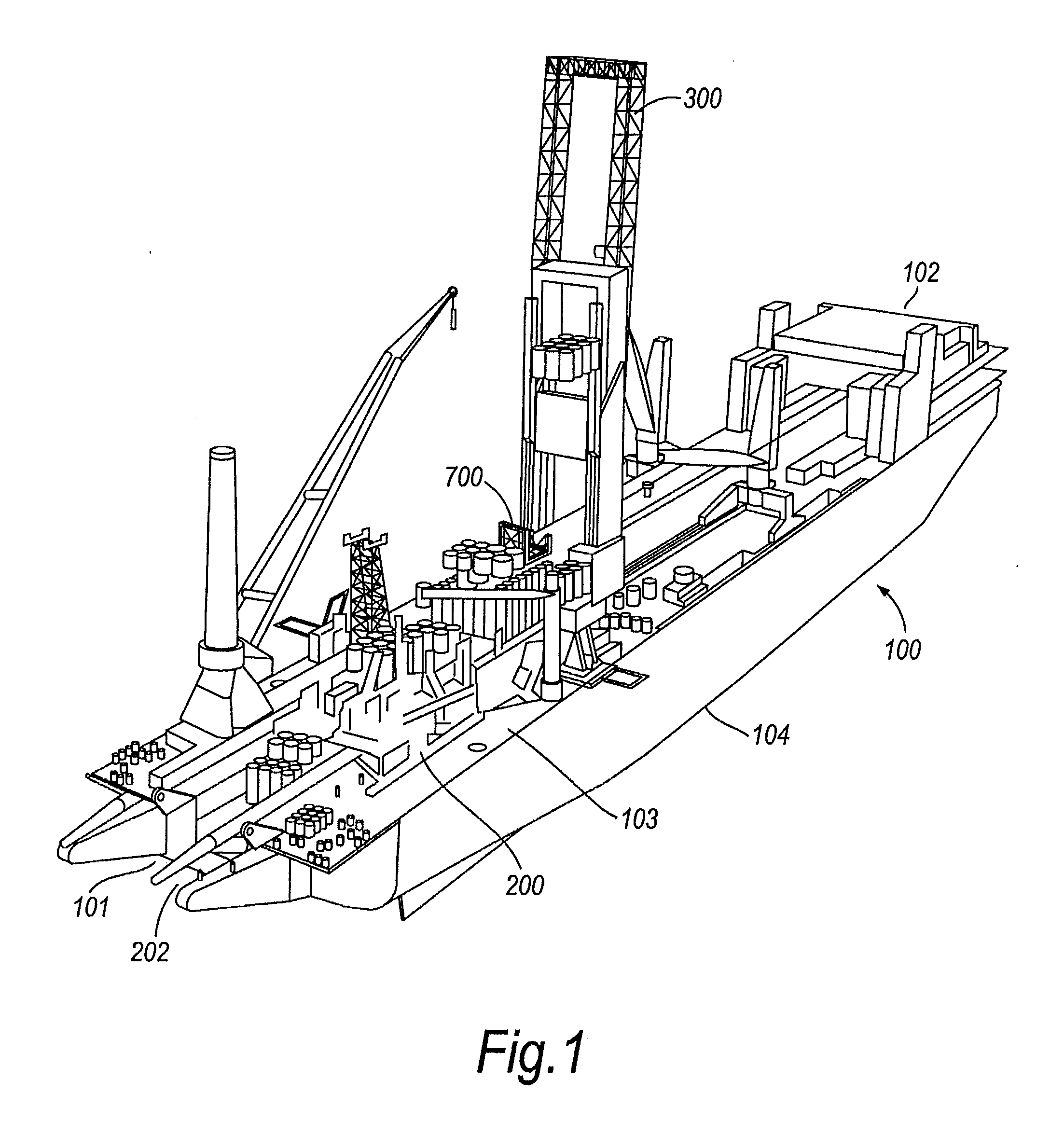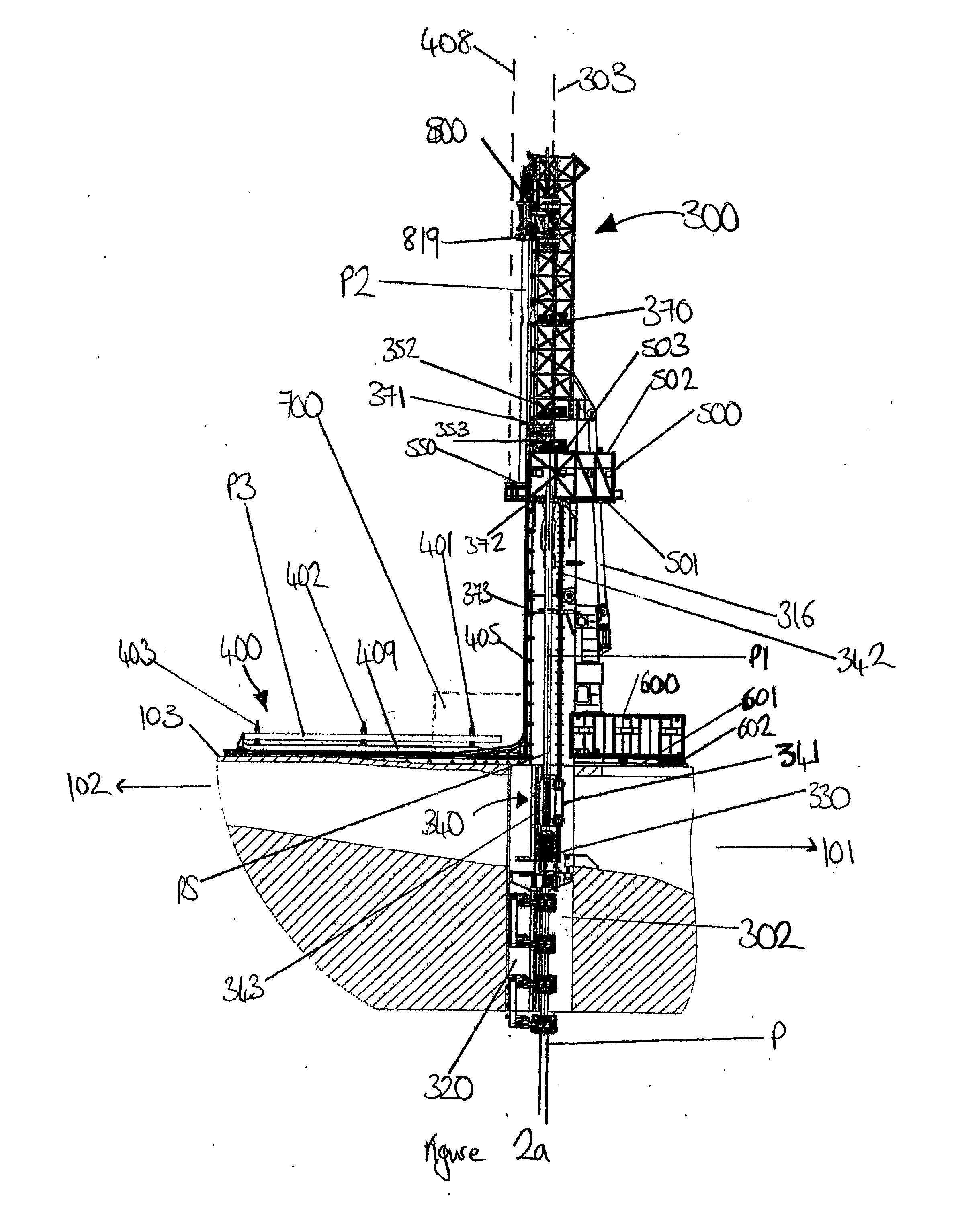Pipe-laying vessel and method of laying a pipeline
a technology of pipe-laying vessels and pipelines, applied in the direction of pipe-laying vessels, pipe laying and repair, mechanical equipment, etc., can solve the problems of reducing the likelihood of structure fatigue, vessel is more likely to be able to pass under bridges or other overhead obstructions,
- Summary
- Abstract
- Description
- Claims
- Application Information
AI Technical Summary
Benefits of technology
Problems solved by technology
Method used
Image
Examples
Embodiment Construction
[0099]FIG. 1 shows a pipe-laying vessel 100. The vessel 100 has a bow end 102 and a stern end 101. The bottom of the vessel, known as the keel line, is labelled as 104. On the deck 103 of the vessel, at the stern end 101 are various ramps defining S-laying apparatus 200. Other S laying apparatus is provided towards the bow of the vessel as more fully described in WO2008 / 107186, the contents of which is incorporated herein by reference. At the stern end 101 is an S-lay opening 202 to allow the pipeline to enter the water near the stern of the vessel 100. The vessel 100 also has a J-laying tower 300 in a middle portion of the vessel partway along the firing line for S-laying.
[0100]FIGS. 2a and 2b show more detailed views of the J-lay tower 300 and associated equipment. The tower 300 extends upwards vertically from the deck 103 of the vessel.
[0101]Below the tower is an opening 302 in the hull of the vessel to the water beneath. This opening allows passage of the pipeline P from the tow...
PUM
 Login to View More
Login to View More Abstract
Description
Claims
Application Information
 Login to View More
Login to View More - R&D
- Intellectual Property
- Life Sciences
- Materials
- Tech Scout
- Unparalleled Data Quality
- Higher Quality Content
- 60% Fewer Hallucinations
Browse by: Latest US Patents, China's latest patents, Technical Efficacy Thesaurus, Application Domain, Technology Topic, Popular Technical Reports.
© 2025 PatSnap. All rights reserved.Legal|Privacy policy|Modern Slavery Act Transparency Statement|Sitemap|About US| Contact US: help@patsnap.com



